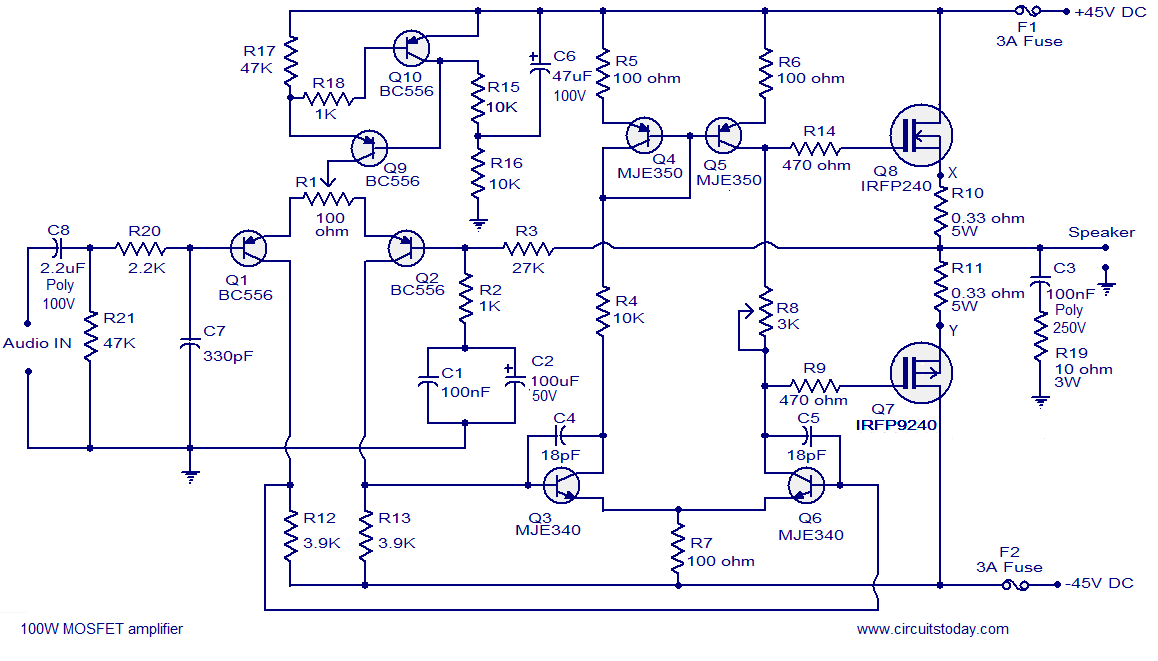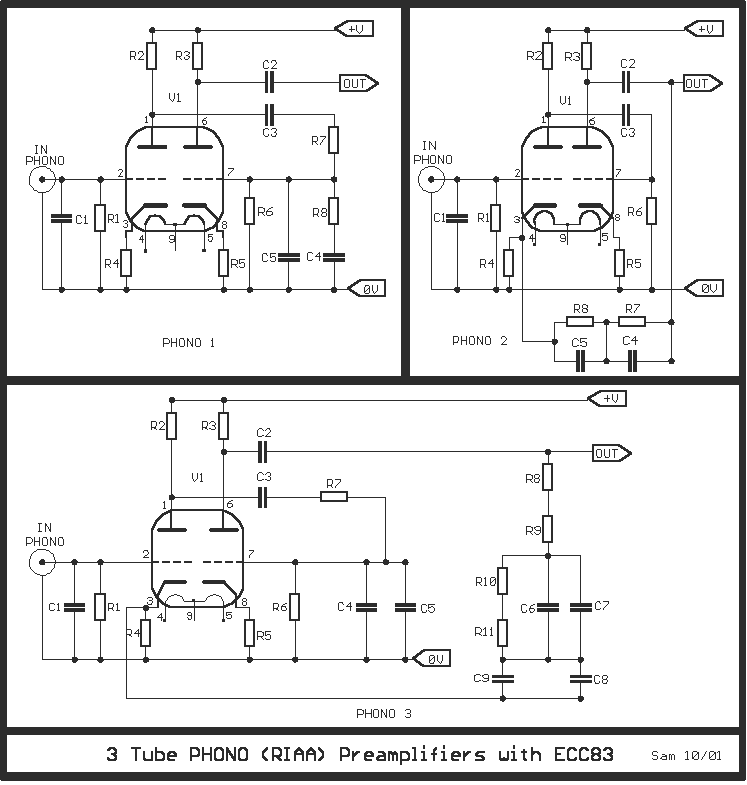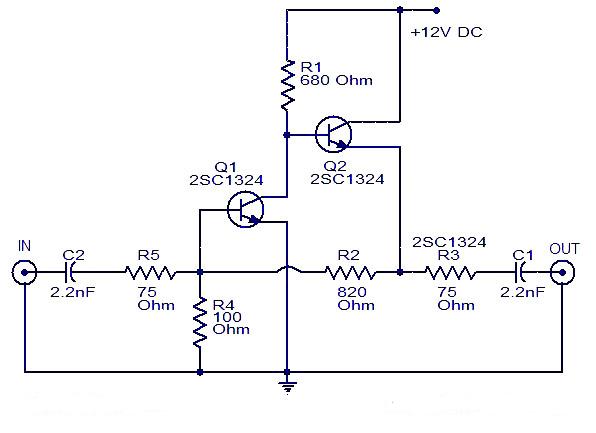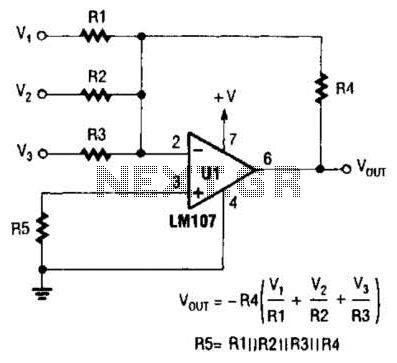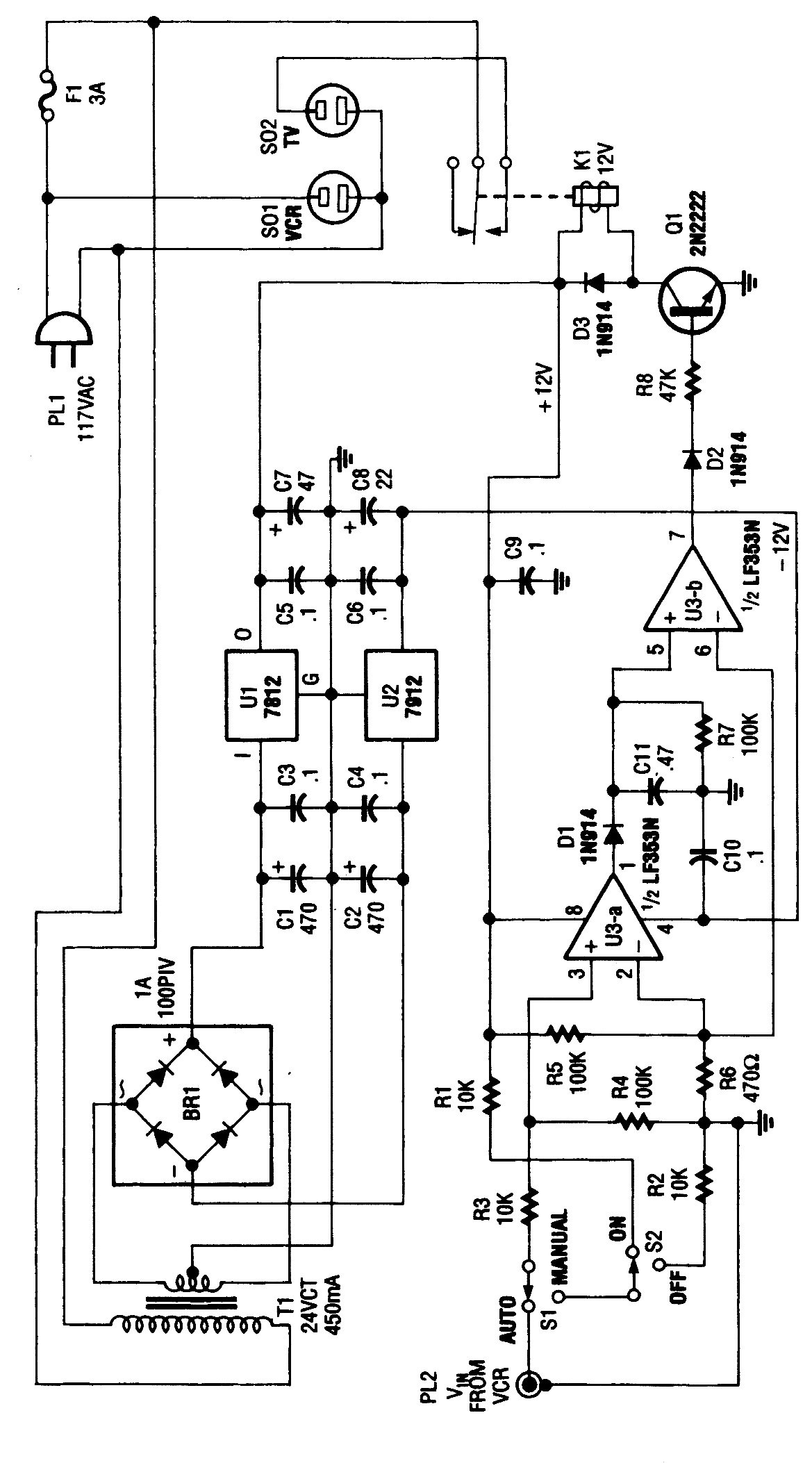
10 To 15W Atv Linear Amplifier
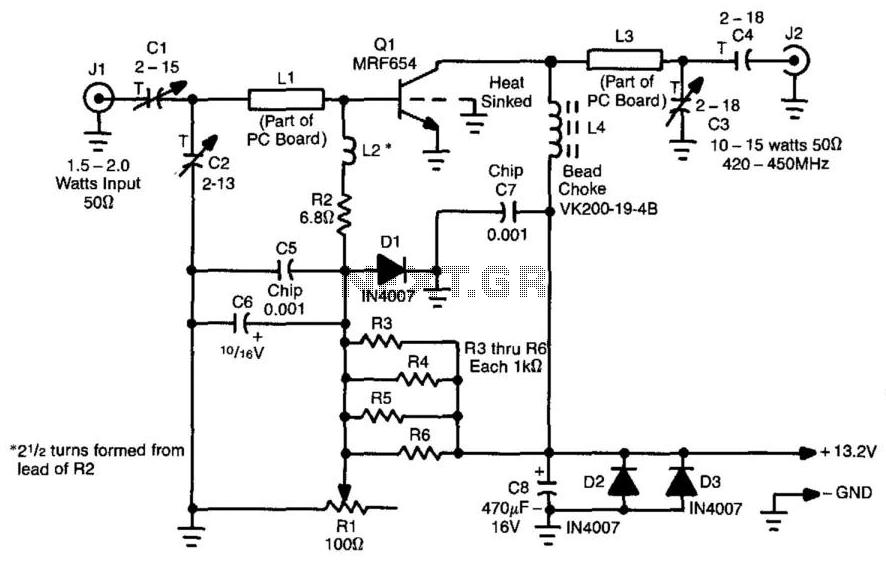
This amplifier is designed for applications requiring a peak-envelope-power (PEP) signal in the range of 10 to 15 watts, specifically within the 420 to 520 MHz frequency range. Components CI, C2, and LI create a matching network for amplifier Q1. L3, C3, and C4 establish an output matching network for a 50-ohm load. L2, R2, D1, and resistors R3 through R6 (with bias adjustment provided by R1) form a biasing network for Q1. Diodes D2 and D3 offer polarity protection for Q1, which necessitates a heat sink for effective thermal management.
The amplifier circuit operates within the specified frequency range, ensuring efficient signal amplification suitable for various communication applications. The matching networks, comprised of capacitors and inductors, are critical for impedance matching, enhancing power transfer and minimizing signal reflections. The input matching network, formed by CI, C2, and LI, optimizes the signal received by Q1, allowing for maximum gain and efficiency.
The output matching network, consisting of L3, C3, and C4, is designed to present a 50-ohm load to the amplifier output, which is a standard impedance in RF applications. This configuration helps maintain signal integrity and maximizes the power delivered to the load.
The biasing network is essential for setting the operating point of Q1, ensuring that the amplifier functions correctly within its linear region. The inclusion of resistors R3 through R6 allows for precise adjustments to the bias current, contributing to the stability and performance of the amplifier. R1 plays a crucial role in this adjustment, enabling fine-tuning of the bias level to accommodate variations in temperature and component characteristics.
Polarity protection is provided by diodes D2 and D3, which safeguard Q1 from reverse voltage conditions that could lead to damage. The need for a heat sink is indicative of the power levels involved, as the amplifier will generate heat during operation. Proper thermal management is vital to maintain performance and reliability, preventing thermal runaway and ensuring longevity of the components.
Overall, this amplifier design incorporates essential features for robust performance in RF applications, with careful consideration given to impedance matching, biasing, and thermal protection. This amplifier is useful for applications where a 10- to 15-W peak-envelope-power (PEP) signal is needed i n the 420- to 520-MHz range. CI, C2, and LI form a matching network for amplifier Ql. L3, C3, and C4 form an output matching network for a 50- load. L2, R2, Dl, and R3 through R6 (with bias adjust Rl) form a biasing network for Ql. D2 and D3 provide polarity protection for Ql, which must be heat-sinked.
The amplifier circuit operates within the specified frequency range, ensuring efficient signal amplification suitable for various communication applications. The matching networks, comprised of capacitors and inductors, are critical for impedance matching, enhancing power transfer and minimizing signal reflections. The input matching network, formed by CI, C2, and LI, optimizes the signal received by Q1, allowing for maximum gain and efficiency.
The output matching network, consisting of L3, C3, and C4, is designed to present a 50-ohm load to the amplifier output, which is a standard impedance in RF applications. This configuration helps maintain signal integrity and maximizes the power delivered to the load.
The biasing network is essential for setting the operating point of Q1, ensuring that the amplifier functions correctly within its linear region. The inclusion of resistors R3 through R6 allows for precise adjustments to the bias current, contributing to the stability and performance of the amplifier. R1 plays a crucial role in this adjustment, enabling fine-tuning of the bias level to accommodate variations in temperature and component characteristics.
Polarity protection is provided by diodes D2 and D3, which safeguard Q1 from reverse voltage conditions that could lead to damage. The need for a heat sink is indicative of the power levels involved, as the amplifier will generate heat during operation. Proper thermal management is vital to maintain performance and reliability, preventing thermal runaway and ensuring longevity of the components.
Overall, this amplifier design incorporates essential features for robust performance in RF applications, with careful consideration given to impedance matching, biasing, and thermal protection. This amplifier is useful for applications where a 10- to 15-W peak-envelope-power (PEP) signal is needed i n the 420- to 520-MHz range. CI, C2, and LI form a matching network for amplifier Ql. L3, C3, and C4 form an output matching network for a 50- load. L2, R2, Dl, and R3 through R6 (with bias adjust Rl) form a biasing network for Ql. D2 and D3 provide polarity protection for Ql, which must be heat-sinked.
.gif)
